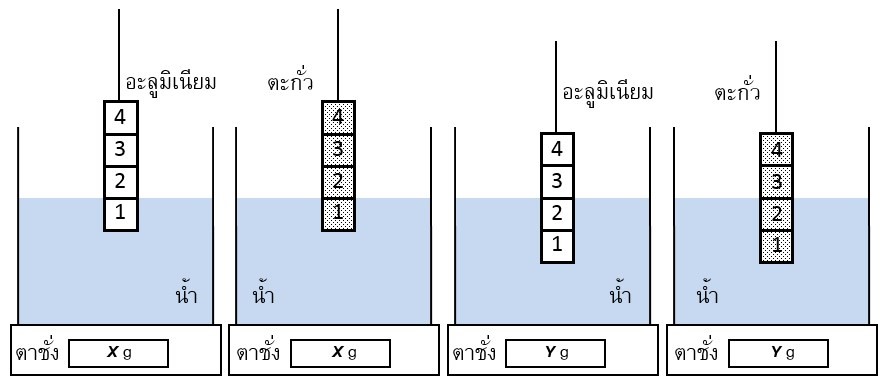การเปรียบเทียบรูปแบบการสอนระหว่างวิดีโอเทปกับการทดลองแบบสาธิตเพื่อพัฒนาแนวคิดวิทยาศาสตร์ เรื่อง แรงลอยตัว
Main Article Content
Abstract
Sura Wuttiprom
รับบทความ: 5 มกราคม 2556; ยอมรับตีพิมพ์: 10 มีนาคม 2556
บทคัดย่อ
การวิจัยนี้มีวัตถุประสงค์เพื่อศึกษาการพัฒนาแนวคิดวิทยาศาสตร์ เรื่อง แรงลอยตัว ของนักศึกษาฟิสิกส์ชั้นปีที่ 1 มหาวิทยาลัยอุบลราชธานี จำนวน 42 คน ผู้วิจัยแบ่งนักศึกษาออกเป็น 2 กลุ่มตามปีการศึกษาที่ลงทะเบียนเรียนวิชาฟิสิกส์ทั่วไป กลุ่มตัวอย่างจำแนกเป็น 2 กลุ่ม ได้แก่ กลุ่มเรียนการทดลองแบบวิดีโอเทป และกลุ่มเรียนการทดลองแบบสาธิต และให้นักศึกษาทำแบบวัดแนวคิดวิทยาศาสตร์แบบ 3 ลำดับขั้น เรื่อง แรงลอยตัว จำนวน 3 ข้อก่อนและหลังการจัดการเรียนรู้ ผลการวิจัย พบว่า นักศึกษาส่วนใหญ่มีแนวคิดวิทยาศาสตร์เพิ่มมากขึ้น แต่ไม่มีความแตกต่างระหว่างกลุ่มที่เรียนแบบวิดีโอเทปกับการทดลองแบบสาธิต แสดงให้เห็นว่า สามารถใช้วิดีโอเทปเรียนการทดลองแทนการสาธิตได้
คำสำคัญ: การทดลองแบบวิดีโอเทป การทดลองแบบสาธิต แรงลอยตัว แนวคิดวิทยาศาสตร์
Abstract
The aim of this research was to study the development of the students’ scientific concepts on buoyant force. The study was conducted with first-year university physics students (N= 42) at Ubon Ratchathani University. The students were divided into two groups based on academic year of students who enrolled in introductory physics course. The first group was presented the experiment in the videotape method, and the another group dealt with the experiment in the form of a demonstration. Students were asked to complete two 3-tiers conceptual questions in the topic of buoyant force both before and after teaching. The results indicated that most students increasingly held scientific concepts but no significant difference in the effectiveness of the experiment in the videotaped or demonstration methods. Therefore, videotaped experiments could be an alternative for demonstration experiments.
Keywords: Videotaped experiment, Demonstration experiment, Buoyant force, Scientific concept
Downloads
Article Details

This work is licensed under a Creative Commons Attribution-NonCommercial 4.0 International License.
References
ณัฏฐณิชา โพธิ์งาม และสุระ วุฒิพรหม. (2553). การจัดการเรียนรู้จากการปฏิบัติการทดลอง เรื่อง อิเล็กทรอนิกส์เบื้องต้นเพื่อเพิ่มผลสัมฤทธิ์ทางการเรียนและทักษะทางวิทยาศาสตร์. วารสารหน่วยวิจัยวิทยาศาสตร์เทคโนโลยีและสิ่งแวดล้อมเพื่อการเรียนรู้ 1(2): 75-84.
สถาบันส่งเสริมการสอนวิทยาศาสตร์และเทคโนโลยี. (2555). ครูวิทยาศาสตร์มืออาชีพแนวทางสู่การเรียนการสอนที่มีประสิทธิภาพ. กรุงเทพฯ: อินเตอร์เอ็ดดูเคชั่น ซัพพลายส์.
Besson, U. (2004). Students’ conceptions of fluids. International Journal of Science Education 26(14): 1683-1714.
Crouch, C., and Mazur, E. (2001). Peer instruction: Ten years of experience and results. American Journal of Physics 69(9): 970-978.
Crouch, C., Fagen, A., Callan, P., and Mazur, E. (2004). Classroom demonstration: Learning tools or entertainments? American Journal of Physics 72(6): 835-838.
Davis, B. G. (1997). Misconceptions as barriers to understanding science. In B. G. Davis (Ed.), Science Teaching Reconsidered: A Hand Book (pp. 27-32). Washington, DC: National Academy.
Loverude, M. E., Kautz, C. H., and Heron, P. R. L. (2003). Helping students develop an understanding of Archimedes’ principle. I. Research on student understanding. American Journal of Physics 71(11): 1178-1187.
McDermott, L. C. (1999). Resource letter: PER-1: Physics education research. American Journal of Physics 67(9): 755-767.
Mohazzabi, P., and James, M. (2012). A simple apparatus for demonstrating fluid force and Newton's third. Physics Teacher 50: 537.
Moreira, J. A., Almeida, A., and Simeão Carvalho, P. (2013). Two experimental approaches of looking at Buoyancy. Physics Teacher 51: 96-97.
Rattanaporn, W., and Wuttiprom, S. (2011). An easy and low-cost laboratory apparatus for enhancing simple harmonic motion concept. The North Region Journal of Science and Technology 3: 135-143.
Ronald, E. (1994). Does the buoyant force depend on the weight or density? Physics Teacher 32: 262-263.
Sever, S., Oguz-Unver, A., and Yurumezoglu, K. (2013). The effective presentation of inquiry-based classroom experiments using teaching strategies that employ video and demonstration methods. Australian Journal of Educational Technology 29(3): 450-463.
Sever, S., Yurumezoglu, K., and Oguz-Unver, A. (2010). Comparison teaching strategies of videotape and demonstration experiments in inquiry-based science education. Procedia Social and Behavioral Sciences 2: 5619-5624.
Sokoloff, D. R., and Thornton, R. K. (1997). Using interactive lecture demonstrations to create an active learning environment. Physics Teacher 35: 340-347.
